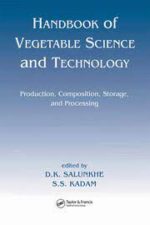The book covers the important aspects of water, air and noise pollution. Using a multidisciplinary approach, it highlights the impact of environmental pollution in the world. It also suggests methods for controlling and scientific monitoring of pollution-causing agents. Also included are chapters on efficient guidelines and standards, radioactive waste, solid waste disposal and sewage treatment, oil pollution and role of insecticides. Pollution in tanneries, fertilizer industry, and pulp and paper industries is also covered. The last few chapters are devoted to environmental management, benefit-cost analysis and mathematical modelling for environmental pollution control.
Environmental Engineering Paperback – 14 July 2017
KShs 7,500.00
The book covers the important aspects of water, air and noise pollution. Using a multidisciplinary approach, it highlights the impact of environmental pollution in the world. It also suggests methods for controlling and scientific monitoring of pollution-causing agents. Also included are chapters on efficient guidelines and standards, radioactive waste, solid waste disposal and sewage treatment, oil pollution and role of insecticides. Pollution in tanneries, fertilizer industry, and pulp and paper industries is also covered. The last few chapters are devoted to environmental management, benefit-cost analysis and mathematical modelling for environmental pollution control.
3 in stock
| SKU: | 9780074633281 |
|---|---|
| Categories: | Agriculture, Engineering |
| Author | G N Pandey |
|---|
Related products
-
Future Hype: The Myths of Technology Change
KShs 1,595.00Future Hype surveys the past few hundred years to show that many of the technologies we now take for granted transformed society in far more dramatic ways than more recent developments so often touted as unparalleled and historic. In this thoughtful book, Bob Seidensticker exposes the hidden costs of technology—and helps both consumers and businesses take a shrewder position when the next “essential” innovation is trotted out.
-
Elements of Enviromental Engineering-Dr K.N. Duggal
KShs 2,586.00The key features include: the important principles and practices of Sanitary Engineering, as they are understood and generally applicable in our country today, have been fully delineated so that it may be easy for the students preparing for various examinations; the treatment of the subject has been kept exhaustive, sufficiently simple without sacrificing the fundamentals involved; and, effort has been made to keep the information as much up-to-date and compact as possible, and with that view, some references have been made to the relevant Indian Standard Specifications, so that to the engineers in the profession, it may also prove to be of use. The book is broadly split up into four parts. Part I deals exclusively with the subject of “Water Supply”, Part II describes “Sewerage and Sewage Treatment”, Part III “Water Supply and Drainage of Buildings” and Part IV “Environmental Sanitation”, which includes only some of the more important topics of the day viz., Refuse Sanitation, Ventilation and Air-conditioning, Air Pollution, and Malaria, incidental to Engineering. A number of selective questions of the various Indian Universities and other examinations have been given towards the end of each chapter to serve as an exercise to the problems duly solved in the chapter. The last 2-3 decades have seen tremendous research and development in the fields of water treatment and sewage/wastewater treatment. New concepts like unit operations in water treatment and unit operation and processes, in particular biological processes, in sewage/wastewater treatment have been introduced. Besides topics like defluoridation, demineralization and wastewater reclamation have evoked considerable interest and attention. To reflect these changes, this book has been revised to make it updated, with the latest information on these topics. The readers will find the book more appropriate and useful to their needs.
-
Handbook of Vegetable Science and Technology
KShs 10,200.00“Furnishes exhaustive, single-source coverage of the production and postharvest technology of more than 70 major and minor vegetables grown in tropical, subtropical, and temperate regions throughout the world. Provides comparative data for each vegetable presented. “
-
Basic Electrical and Electronics Engineering
This book provides an overview of the basics of electrical and electronic engineering that are required at the undergraduate level. Efforts have been taken to keep the complexity level of the subject to bare minimum so that the students of non electrical/electronics can easily understand the basics. It offers an unparalleled exposure to the entire gamut of topics such as Electricity Fundamentals, Network Theory, Electro-magnetism, Electrical Machines, Transformers, Measuring Instruments, Power Systems, Semiconductor Devices, Digital Electronics and Integrated Circuits.
-
Agricultural Sustainability by Elisa Gomez Gonzalez (Author)
KShs 21,000.00Agricultural Sustainability starts with an overview of agricultural sustainability and the factors influencing the agricultural sustainability. As agricultural sustainability is all about understanding ecosystem services and can be seen as a study of relation between organisms and their respective environment, this text has been written to cover all these aspects. Further, sustainability in poultry and aquaculture has been described to broaden the research and potential of agricultural sustainability in arid and semi-arid areas has also been discussed
-
Tropical Roots and Tuber Crops: Cassava, Sweet Potato, Yams and Aroids (Crop Production Science in Horticulture)
KShs 8,260.00Root and tuber crops are important to agriculture, food security and income for 2.2 billion people in developing countries. These species produce large quantities of dietary energy and have stable yields under difficult environmental conditions. This second edition of Tropical Root and Tuber Crops is an authoritative treatment of four important root and tuber crops: cassava, sweet potato, yams, and aroids.
The same format is followed for each crop: Origin and History, Taxonomy and Botany, Breeding and Genetics, Developmental Physiology, Agronomy, Pests and Diseases, Post-Harvest Quality and Marketing. This new edition reviews the scientific literature produced during the last decade and presents major technical advancements. Modern molecular tools have been used to clarify the phylogeny, taxonomy and origin of these species. Similar advances have been made in physiology, agronomy, pathology and product chemistry. It is essential reading for students, researchers and horticulturists.
-
The Science of Agriculture: A Biological Approa
KShs 27,580.00THE SCIENCE OF AGRICULTURE: A BIOLOGICAL APPROACH, Fifth Edition, masterfully introduces the biological sciences and explores the influences of these sciences on modern agricultural practices and the agricultural industry. Reader-friendly and superbly illustrated, this highly practical text explains not only the �how� of agriculture, but also the �why� behind agriscience, presenting information on plant and animal systems, soils, cell functions, genetics, genetic engineering, plant and animal reproduction, entomology, biotechnology, and environmental concerns. Additionally, the text spotlights career opportunities and discusses new directions in agriculture, including topics such as no-till crops, high-pressure processing in food preservation, fracking, and more, to further engage you with today�s agricultural world.
-
Research Methods for Engineers
KShs 6,300.00Learn how to plan for success with this hands-on guide to conducting high-quality engineering research. Plan and implement your next project for maximum impact: step-by-step instructions cover every stage in engineering research, from the identification of an appropriate research topic through to the successful presentation of results. Improve your research outcomes: discover essential tools and methods for producing high-quality, rigorous research, including statistical analysis, survey design, and optimisation techniques. Research with purpose and direction: clear explanations, real-world examples, and over 50 customisable end-of-chapter exercises, all written with the practical and ethical considerations of engineering in mind. A unique engineering perspective: written especially for engineers, and relevant across all engineering disciplines, this is the ideal book for graduate students, undergraduates, and new academics looking to launch their research careers.










Be the first to review “Environmental Engineering Paperback – 14 July 2017”